The “Assisi-Spoleto Olive Belt” is the main olive-growing area of Umbria. It stretches over the territory of six municipalities situated in central Umbria.
Assisi, Spello, Foligno, Trevi, Campello sul Clitunno, Spoleto.
On February 3, 2016 the latter, united in a common intent to protect and develop their territory, formed the committee to promote the “Assisi-Spoleto Olive Belt”, signing a specific memorandum of understanding, within the framework of which three strategic lines that will support the development project are identified.
COMMON HERITAGE
Common heritage
OLIVE BELT
Common heritage
MIPAAF RECOGNITION
The recognition was requested by registering with the National Register of Rural Landscape, Agricultural Practices, and Traditional Knowledge, set up by the MIPAAF – Ministry of Agricultural, Food and Forestry Policies. The qualifying output will give the Olive Belt the value of a “landscape present in a certain territory for a long time, even centuries, which has become stable and evolves very slowly. It has been created by the agricultural activities, thanks to the use of practices and techniques characterized by a reduced use of external subsidiary energies in terms of mechanization, irrigation, chemical fertilizers, and crop protection products, with the presence of cultivation systems characterized by a long historic persistence and strong ties with the local social and economic systems that produced them. The slow evolution shows a significant integrative harmony among production, environmental, and cultural aspect of a given area or region.”
Common heritage
MIPAAF RECOGNITION
The recognition was requested by registering with the National Register of Rural Landscape, Agricultural Practices, and Traditional Knowledge, set up by the MIPAAF – Ministry of Agricultural, Food and Forestry Policies. The qualifying output will give the Olive Belt the value of a “landscape present in a certain territory for a long time, even centuries, which has become stable and evolves very slowly. It has been created by the agricultural activities, thanks to the use of practices and techniques characterized by a reduced use of external subsidiary energies in terms of mechanization, irrigation, chemical fertilizers, and crop protection products, with the presence of cultivation systems characterized by a long historic persistence and strong ties with the local social and economic systems that produced them. The slow evolution shows a significant integrative harmony among production, environmental, and cultural aspect of a given area or region.”
Common heritage
FAO GIAHS SITE RECOGNITION
The Olive Belt has been officially designated a FAO GIAHS – Globally Important Agricultural Heritage Systems – site. This recognition gives the Olive Belt the qualification of an “Agro-cultural system of worldwide importance created and managed by generations of farmers, who have set up production using only local natural resources, with management practices adapted to the local needs and evolutionary processes of sociocultural and ecological interaction and synergy.”
The file of the candidacy had been presented to the Ministry for Agricultural Policy and was accepted by the FAO – the United Nations Food and Agriculture Organization.
Common heritage
UNESCO GOAL
This is the third and most ambitious goal.
The “Assisi-Spoleto Olive Belt” could become, if the procedure is successful, a site of exceptional universal value, as the result of a joint effort of nature and man carried on down through the centuries, thanks to advantages originating in their natural environment, and of the social, economic, and cultural forces. In this case, also, it is necessary to activate a complex candidacy procedure with the UNESCO – United Nations Educational, Scientific and Cultural Organization, for which in-depth studies and analyses on the environmental and landscape heritage are necessary.
Common heritage
UNESCO GOAL
This is the third and most ambitious goal.
The “Assisi-Spoleto Olive Belt” could become, if the procedure is successful, a site of exceptional universal value, as the result of a joint effort of nature and man carried on down through the centuries, thanks to advantages originating in their natural environment, and of the social, economic, and cultural forces. In this case, also, it is necessary to activate a complex candidacy procedure with the UNESCO – United Nations Educational, Scientific and Cultural Organization, for which in-depth studies and analyses on the environmental and landscape heritage are necessary.

Committee to Promote “The Assisi-Spoleto Olive Belt”
Privacy Policy
Versione Italiana
Credits











